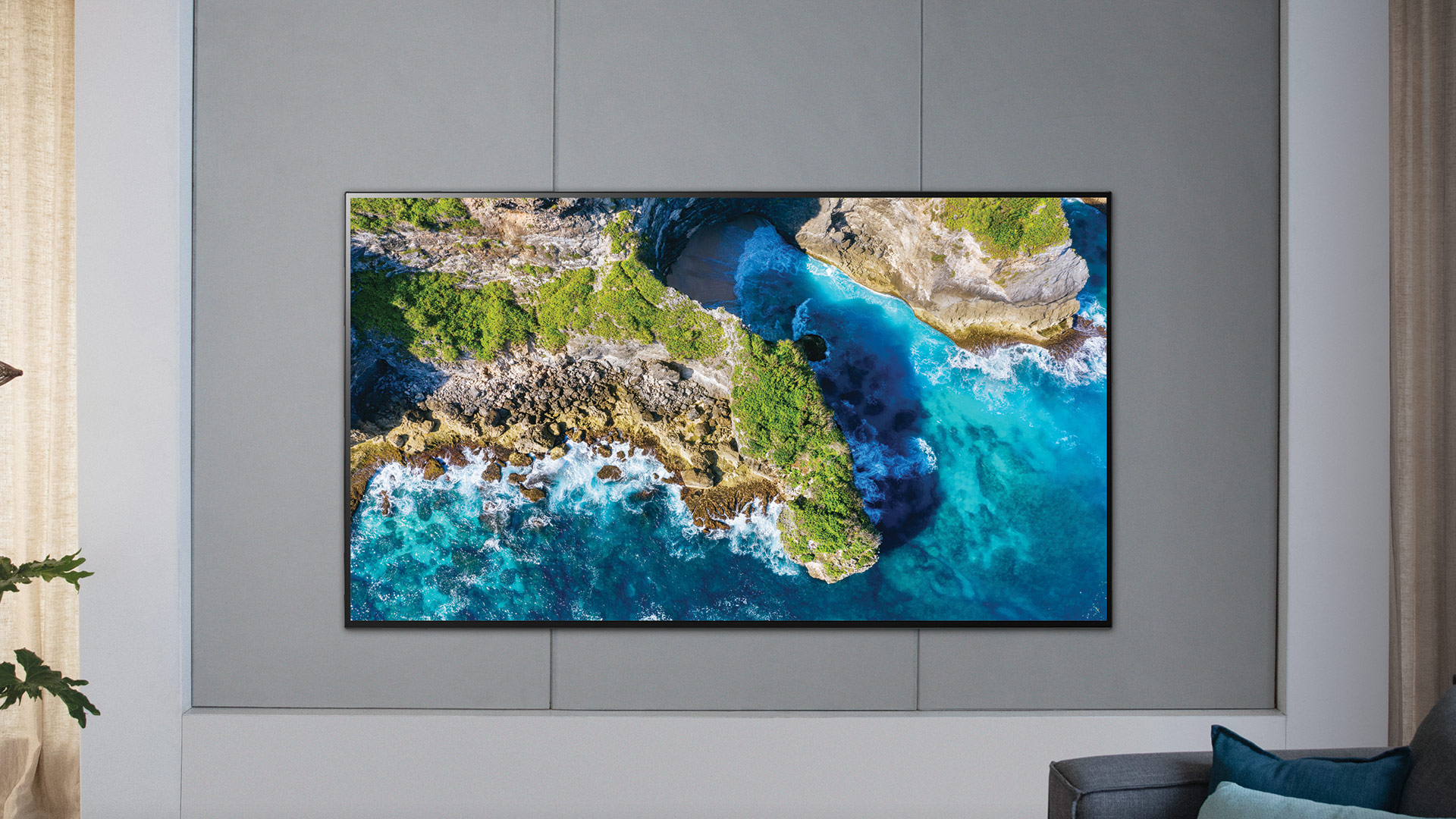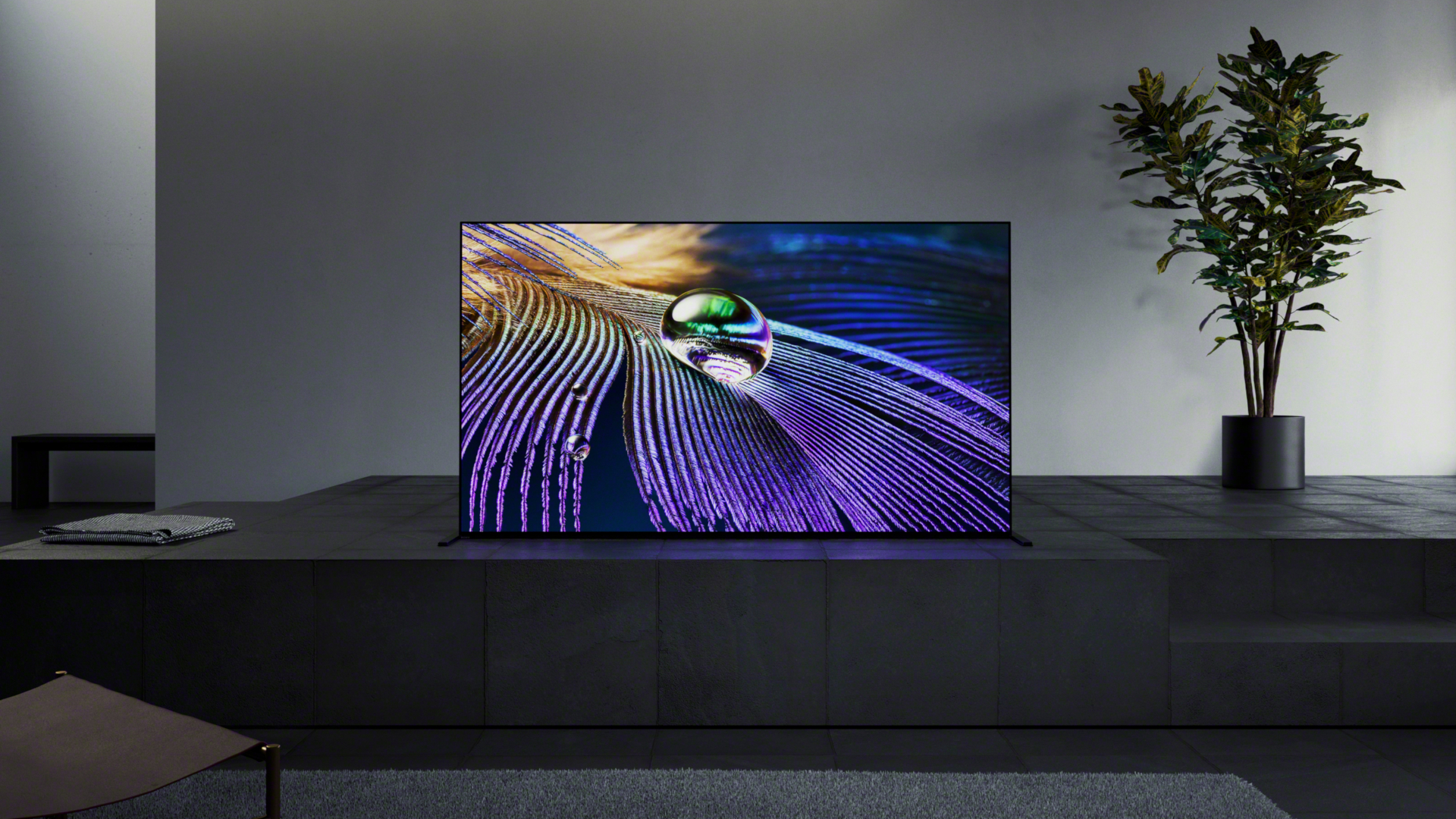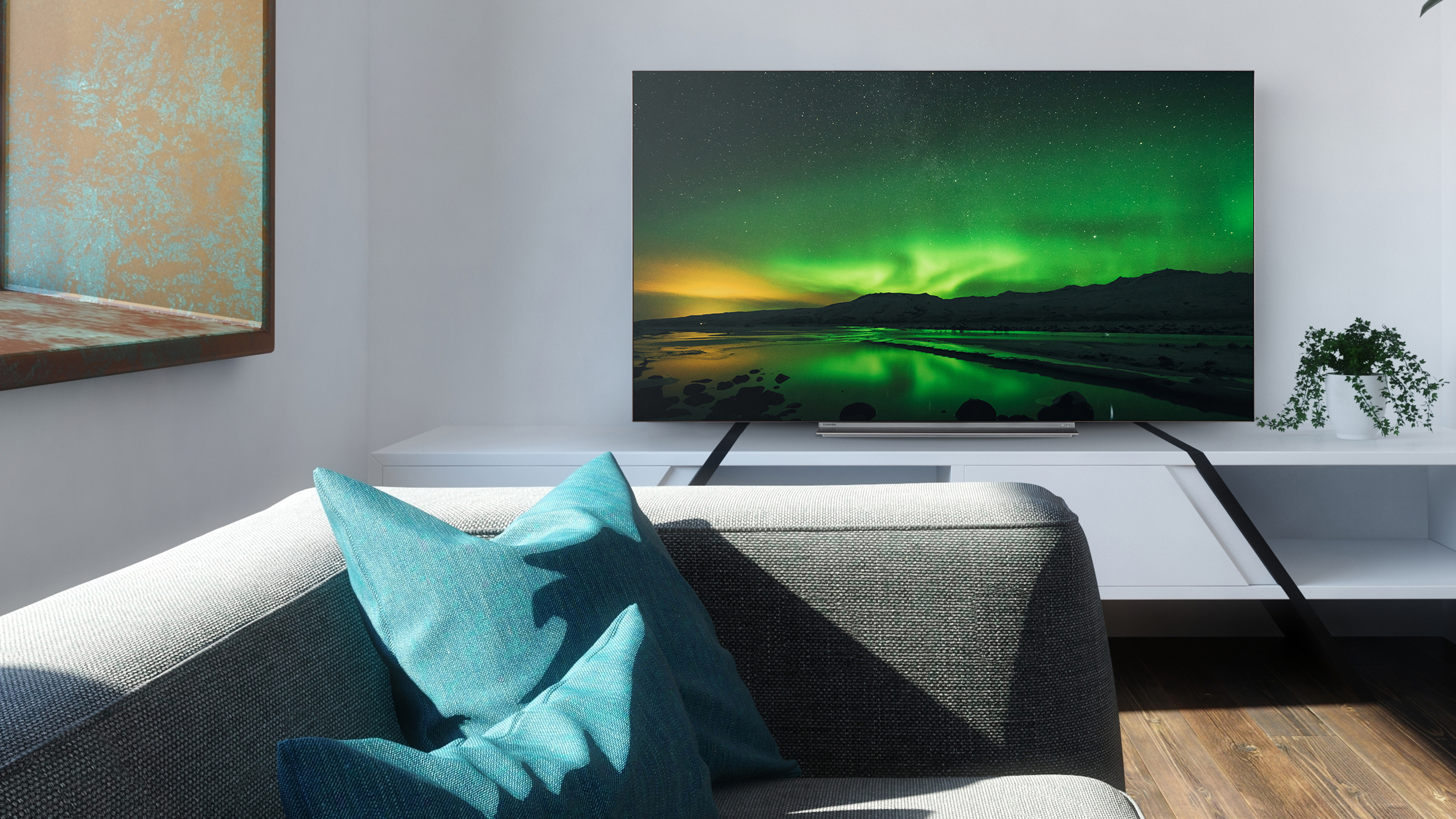What is OLED? Melanize levels, burn-in, and the Nintendo Switch explained

What is OLED? If you've spent prison term looking for for a new TV, eyeing up the stylish laptops, or reading about the new Nintendo Switch OLED, then you'll hold heard the term OLED before. But just because information technology's everywhere right now, doesn't mean it's easy to define. So what is OLED TV tech? And, importantly, act up you need to ascent to an OLED TV?
OLED stands for 'Organic Light Emitting Diode'. Plainly put through, this refers to the panel that's used deep down an OLED TV. This panel displays totally of the things that you can see on the screen, that's the images, colors and light that make up your preferent movies, TV shows and games.
It's this Organic light-emitting diode panel that makes Organic light-emitting diode TVs stick ou in compare to totally of the other types of TV technologies happening the food market true now, which includes CRT (cathode ray tube), LED (light-emitting rectifying valve), LCD (liquid crystal display), or QLED (quantum dot).
The difference is in the constituent material that OLED TVs use, which is much expensive to produce. Importantly, it besides has little of a shelf life story, only many indicate that the benefits of OLED outweigh the expiration date.
And on that point are many benefits. OLED TVs bring you better image quality (call up blacker blacks and brighter whites), faster response times and reduced power using up. The large fast response multiplication are good news if you're on the hunt for a new gaming TV.
So if you're looking to buy 1 of the best TVs (or whatever other screen-based contraption), you postulate to memorize more about OLED because you'll probably want to consider an OLED TV. In fact, exclusively Samsung's QLED TVs offer a rival to OLED – while Micro LED is promising but still has a way to go in front it can compete.
This guide is an OLED TV explainer, serving you to figure out how OLED whole shebang, what sets an OLED TV divided from otherwise types and, importantly, if this TV tech is right for you.
OLED explained
What is Organic light-emitting diode?
OLED stands for Organic LED, with the 'organic' part referring to the carbon copy film that sits at bottom the panel in front the glass screen.
OLED panels emit their own light when an electric current is passed through, whereas cells in a LCD-Light-emitting diode display require an external light source, like a giant star backlight, for brightness.
This backlight is what separated LCD screens from their LED variants. A longstanding LCD screen has a backlight (called a passionless-cathode fluorescent soft, or CCFL) which is uniform across the entire back of the screen.
This means that whether the image is black or white, IT is being lit by exactly the Saame luminosity across the panel. This reduces what we call "hotspots," or areas of super smart light, because the actual ill source illuminating them is uniform.
This all started a few years back when engineers at companies look-alike Samsung and Sony introduced an array of LEDs as a backlight, which meant that if a certain part of the screen was black and then those LEDs behind that portion could be turned off to make IT appear blacker.
This is a better solution than a CCFL backlight, just IT still has its problems. Since information technology's a light tail the LCD producing the illumination rather than the LCD layer itself, the elucidation is not entirely in-sync with the pixel ahead of it. The result is an effect known as 'blooming', whereby Light-emitting diode light from bright portions of the image bleeds over into areas of total darkness.
This is what separates OLEDs from LCD/LED displays. In an Organic light-emitting diode TV show, the pixels themselves are the things producing the light, and so when they need to be black they are capable to turn out completely, rather than relying connected a backlight to turn slay on their behalf.
Is OLED Worth it?

Is Organic light-emitting diode worth the cost?
If you watch an OLED and comparability it to your experience with other benign of TV panel, you'll observe the result is remarkably dark blacks in an image, and when you combine this with the bright whites of an OLED panel, you're left with a fantastically vibrant image overall.
LG and Panasonic, the most consistent producers of OLED televisions on the planet, corresponding to use the condition "space contrast" to key how the self-lighting pixels switch off completely when reproducing black bountiful it an "absolute" black color instead of a "relative" black that single describes how dark one pixel can get compared to the brightest pixel on the screen.
For years at that place was a question mark about longevity of OLED panels, piece production lines have been impossible to pass wate profitable due to dominating failure rates.
But as companies like LG invest billions in development of OLED – with the likes of Philips and Sony joining the fray – its affordability is improving, even if it's even so more expensive than competitive technologies. Current yield issues for LG's last-agape TV manufacturing plant won't be helping that price drop come quicker, either.
The advantages of OLED go beyond simple static image timber, though, to the responsiveness and smoothness of the display itself, meaning gamers and home cinema aficionados are going to absolutely love Organic light-emitting diode TV.
OLED panels are capable of a refresh rate of as low Eastern Samoa 0.001ms, which for reference, is round 1,000 times faster than a standard LED-backlit LCD panel, while also organism superior to the today-interrupted plasma tech, too.
And, because the lighting source they use is and so flyspeck, the depth of screen out sizes has shrunk at the same rate. That means OLED TVs birth awesomely rich blacks and bright, heyday whites, improved color accuracy as healed as smooth sensitive motion - and all from a form factor that's just a few millimeters in depth and much lighter than standard TVs.
Nintendo Permutation OLED
What about the Nintendo Switch Organic light-emitting diode?
What about the Nintendo Switch OLED?
OLED isn't but a TV technology. It's found in countless premium smartphones, besides as the new Nintendo Switch OLED – a 2021 bend on the beloved gaming soothe that packs an Organic light-emitting diode screen preferably than the LCD display used on the existing Switch over and Alternate Lite.
Its arrival in a revamped Nintendo gambling console is no accident, though. Nintendo's decision to utilize OLED speaks to the tech's ability to give birth insurance premium prototype quality, and we only when expect it to enhance the experience of handheld gaming, just as information technology's enhanced the viewing go through of countless OLED TVs.
An OLED Permutation should make for even more vibrant colors and improved contrast – crucial for the increasingly lavish and detailed graphics of current games – with the abstruse blacks connected with OLED panels ensuring stark images in games much as the upcoming Breath of the Unbroken 2.
Its OLED's self-emissive nature that helps in this regard, ensuring that 'off' pixels are really unsatisfactory, creating a real black rather than a semifinal-convincing gray. This too means the level of direct contrast between bright and dark-skinned areas of the screen is heavy, even 'infinite'.
It's notification that Nintendo has opted for OLED for a insurance premium step-up model of its console table, even accelerative the sizing of the screen so that you can better appreciate the new Switch's self-emissive pixels.
Those pixels can also in a flash tack between states, meaning that response multiplication are precise fast – idealistic for responsive sport, or for acquiring the edge in competitive gaming.
Read more: Nintendo Swop OLED release date, price, and eyeglasses
What OLED TVs are there?

World Health Organization makes OLED TVs?
OLED TVs have been on the market since 2012, and a range of manufacturers have tackled the technology over the years. It used to be the case that OLEDs were produced past just Samsung and LG.
Citing its be and how difficult it was to produce, Samsung dropped the technology and has made clear information technology has no intention of restarting production any clip soon. Back in 2020, Hisense ditched its OLED focus too.
LG, on the other pass, has been releasing OLED sets consistently over the past a few years. The 2021 LG TV line-up has been strong so Army for the Liberation of Rwanda this year. The LG Z1 8K OLED launched, one of very few televisions that meld 8K resolution with the benefits of an OLED panel. Although IT's eye-wateringly expensive.
The Gallery Series OLED has a replacement with the LG G1 Gallery OLED TV and the heir to last year's popular CX OLED is the LG C1 OLED Idiot box. At that place's likewise a budget OLED TV series on offer, the A1 OLED, as swell as many others.
LG has likewise expanded its range of Tv set sizes, with an 83-inch size set to hit every unprecedented OLED 4K Video LG is releasing in 2021. We heard straightaway from LG Display itself that an even smaller 42-inch size is on its way for 2021 too.
If you're not big into LG TVs, there are heap Thomas More OLED TVs from opposite brands addressable to buy now too. The Panasonic 2021 TV personal credit line-up includes the Panasonic JZ2000, Panasonic's flagship TV for the year. The JZ1500 is a step-down OLED TV, though cardinal that still makes utilise of the customs 'Subdue HDR OLED' empanel normally reserved for Panasonic's flagship. At that place's also the more low-priced, mid-spec Panasonic JZ980.
Although IT's not just the biggest brands that make OLED offerings. E.g., the Vizio OLED 4K TV isn't a perfect TV, simply it's affordable and offers stunning 4K HDR pictures, arsenic easily as Dolby Vision and HDR10+ defend.
For more of the stylish and greatest OLED TVs, head to our best OLED TVs scout to see the top models we've had the pleasance of reviewing happening the site – or our OLED TV deals page for the cheapest sets going right now.
OLED prices

Why are Organic light-emitting diode TVs thus expensive?
OLED TVs are definitely getting cheaper, but they're still a long way of life from what we'd call affordable. The prices of new LG TVs set forth at $1,399 / £1,099 / AU$2,130 (that's the LG A1 OLED's price label, specifically). Those made by Panasonic and Sony are usually more big-ticket still, simply we are visual perception cheaper competitors enter the market, like the Vizio OLED 4K TV, which starts at $1,299.99 for the 55-inch model.
The scarcity of OLED TVs on the market has meant that those small enumerate of players in the market are to a greater extent operating room less free to charge exactly what they want. An increase in competition, though, is helping to change that, as is the introduction of a new 48-column inch OLED size and a scaling ascending of production helping to drop the price of budget Organic light-emitting diode TVs.
Occasionally a year-old model will now neglect to three-figure sums, though, with the Vizio H1 Organic light-emitting diode selling for $899 in flash sales, surgery the Philips 754 going for £999 in the UK – and we're definitely at something of a tipping point. The arrival of 42-inch OLEDs down the line would certainly help matters too.
IT's definitely worth safekeeping an eye out for end-of-year gross revenue. Colorful Friday and Cyber Monday usually have numerous good deals on OLED TVs – and given their commonly high starting price, you can a great deal get hundreds discounted at the far time. Cheaper OLEDs, though dismiss still see notable price cuts that bring them more within get hold of of mid-range buyers.
You'rhenium releas to see a price premium on most OLED reveal gadgets otherwise TVs, likewise. The new Nintendo Switch OLED costs $349.99 / £309.99 / AU$539, which is a notable uptick from the $299.99 / £279.99 / AU$449 cost tag of the mainline LCD mannequin.
- Check out the latest OLED TV prices and deals for more details
OLED burn-in

Do I require to worry about burn-in with Organic light-emitting diode?
Burn in, or image retention, is when an image or sequence is played so often and continuously on a tv that information technology leaves a permanent mark on the panel – obviously not ideal for a house television.
You Don River't particularly need to interest, as IT largely happens only if displaying a adynamic visualise or succession on repeat, as with a display unit in a showroom or sales outlet. You should get several years warranty, anyhow, and we wear't see many home cinema fans using their Organic light-emitting diode Television set in this way.
TV makers care LG are also working to specify the risk of this, with screen recoverer features, a Screen Shift function that "moves the screen slightly at regular intervals to keep up image quality", and "Logo Luminousness Adjustment, which can detect static Son on the screen and reduce smartness to serve decrease ageless image retention" (via LG.com).
But if you're planning on leaving your Telly for countless hours at once – say, to parent the children in your absence, or to play the same looping video over and over – and so OLED Crataegus laevigata non be the right panel engineering for you.
What's next?

What's the futurity for OLED?
OLED is an pricy panel engineering science that has finally managed to pull in traction – after outlay sol long as an outlier that we wrote an belief piece in 2014 virtually how the technology power be precise.
Obviously that didn't reverse resolute be the case. In fact, market analysts are predicting 2021 will equal the year of the OLED, with shipments of OLED screens meant to increase by 80% from 2020 (via LG).
We've seen plenty of stunning OLED models hit the market this twelvemonth alone. Although price points are allay attractive an age to drop within reach of regular consumers.
Simply impartial because OLED isn't inexpensive yet doesn't mean it's not getting meliorate. Even at the buns stop, a $1,200 / £1,200 price tag isn't what we'd consider budget, but it's a great peck cheaper than what OLED was retailing for justified conscionable a year ago.
That trend is forever going to exist good intelligence for the consumer, though manufacturers may have other things in mind.
LG's rollable OLED – which unfurls out of a box, either happening the floor or ceiling – has like a sho released in South Korea, with a wider release seeming likely in 2021. New form factors like these, including even transparent panels, are always in the plant, though not entirely of these experimental ideas end up devising IT to securities industry.
There are besides prototype OLED TV designs out there that feature thinner, scroll-like form factors, or can be installed at the foot of a bed.
Samsung is one of various TV makers sounding to develop what's called QD-OLED: a new type of Organic light-emitting diode panel that uses quantum dot emitters to improve luminance. The tech is very much in development, but when it arrives, it could meld the competitive QLED and OLED technologies and render previous methods of production obsolete.
Galore companies and researchers are also actively working to stimulate OLED even off better and brighter. OLED TVs are disreputable for their dim output, but there's bright news from researchers at the University of Michigan.
A team has developed a new electrode that can 'liberate' 20% more light from respective screens at the indistinguishable time equally increasing energy efficiency and improving the battery life of OLED displays. Right now this only applies to portable displays – smartphones and the likes of – but it's a good step for TVs too.
- Plasma vs OLED: how have televisions improved?
Original reporting therein clause was by Jamie Carter.
What is OLED? Black levels, burn-in, and new Switch
Source: https://www.techradar.com/news/what-is-oled




0 Komentar